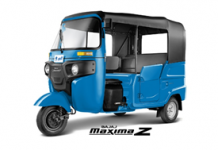 Santa Fe Sport buyers have the choice of a 2.4-liter Gasoline Direct Engine (GDI) engine or a turbocharged 2.0-liter GDI engine. Both engines have been well tested in the Hyundai Sonata and provide more than enough power for city or highway driving and have the ability to tow up to 3,500 pounds. With 190 horsepower and 181 lb-ft of torque (estimated), Santa Fe Sport 2.4 still manages outstanding fuel economy of 23 city and 33 highway (estimated). This powertrain truly combines power and fuel efficiency with refined driving dynamics. The higher output 2.0-liter turbocharged engine found under the hood of Santa Fe Sport 2.0T increases horsepower to 264 (estimated), while also delivering excellent fuel economy. The top-of-line LWB Santa Fe is powered by the highly acclaimed 3.3-liter V6 engine, which is also found in the Hyundai Azera.
Santa Fe Sport buyers have the choice of a 2.4-liter Gasoline Direct Engine (GDI) engine or a turbocharged 2.0-liter GDI engine. Both engines have been well tested in the Hyundai Sonata and provide more than enough power for city or highway driving and have the ability to tow up to 3,500 pounds. With 190 horsepower and 181 lb-ft of torque (estimated), Santa Fe Sport 2.4 still manages outstanding fuel economy of 23 city and 33 highway (estimated). This powertrain truly combines power and fuel efficiency with refined driving dynamics. The higher output 2.0-liter turbocharged engine found under the hood of Santa Fe Sport 2.0T increases horsepower to 264 (estimated), while also delivering excellent fuel economy. The top-of-line LWB Santa Fe is powered by the highly acclaimed 3.3-liter V6 engine, which is also found in the Hyundai Azera.
THETA II GDI 2.4-LITER ENGINE
The Theta II GDI 2.4-liter four-cylinder engine with a GDI fuel delivery system contributes to improved fuel efficiency and lower emissions in Santa Fe Sport. This shorter, more direct path of fuel delivery, allows for greater control of the fuel mixture at the optimum moment, thus improving efficiency. The fuel is injected by a camshaft-driven, high pressure pump that operates at pressures up to 2,175 psi. Direct injection also utilizes a higher-than-normal 11.3 compression ratio for increased power. When compared to naturally-aspirated engines, this power plant delivers best-in-class four-cylinder horsepower, best-in-class torque and best-in-class power-to-weight ratio. The high-tech, all-aluminum, 16-valve engine also features Dual Continuously Variable Valve Timing (DCVVT) and a Variable Induction System (VIS) for better engine breathing.
2.0-LITER THETA II TURBOCHARGED ENGINE
The new Santa Fe Sport 2.0T is the first Hyundai crossover to have both GDI technology and a turbocharger. This option provides more horsepower than many of the V6 competitors, yet delivers gas mileage similar to competitive four-cylinder models.
The 2.0-liter turbocharged GDI four-cylinder engine in the 2013 Santa Fe Sport 2.0T produces 264 horsepower and 269 lb-ft of torque with regular fuel. Hyundai’s 2.0-liter Theta turbocharged engine features a twin-scroll turbocharger that when combined with the GDI system, results in instantaneous power delivery. The Ford Edge, like the Santa Fe Sport 2.0T, uses a turbocharged GDI four-cylinder engine. However, the Santa Fe Sport 2.0T has upped the ante with 26 more horsepower, a better power-to-weight ratio and higher fuel economy numbers.
Twin-scroll turbocharger designs have two exhaust gas inlets that are divided by split walls inside the turbine housing with both gas passages controlled by a waste-gate. A twin-scroll turbo recovers even more energy from the exhaust than a single-scroll turbocharger, thanks to a divided manifold. The twin-scroll design separates the cylinders whose exhaust gas pulses interfere with each other, resulting in improved pressure distribution in the exhaust ports and a more efficient delivery of exhaust gas energy to the turbocharger’s turbine.
For example, at the start of the intake stroke of cylinder one and when both the intake and exhaust valves are open (valve overlap period), cylinder three already begins its exhaust stroke with an open exhaust valve. If the exhaust passages of cylinder one and three were connected, the exhaust gas pulse from cylinder three would increase the back pressure of cylinder one – reducing the induction of fresh air and increasing the amount of hot residual gases inside the cylinder. However, with the twin-scroll turbocharger setup, this interference is minimized. The result of this superior scavenging effect from a twin-scroll design leads to several advantages over the traditional, single-scroll turbocharging systems, including:
• Better pressure distribution in the exhaust ports
• More efficient delivery of exhaust gas energy to the turbocharger’s turbine
• Greater valve overlap for improved quality/quantity of air charge entering each cylinder
• Ensures each cylinder is packed with a denser and purer air charge
• Improved combustion efficiency
• Low engine-speed efficiency
• Kinetic exhaust gas energy is not wasted or trapped
• Cooler cylinder temperatures
• Lower exhaust temperatures
• Leaner air/fuel ratio
Santa Fe Sport 2.0T’s twin-scroll turbo has superior handling of exhaust gas separation at the turbine, leading to improved low-end torque and faster transient torque response.
Two key features of Hyundai’s twin-scroll turbocharger setup are as follows:
• The stainless steel exhaust manifold and the twin-scroll turbine housing are cast in a patent-pending one-piece design
• The waste-gate for the turbocharger uses a motor-driven electrical controller instead of being mechanically controlled
Thanks to the integrated stainless-steel turbine housing with exhaust manifold, not only is the weight and cost of the casting dramatically reduced, but the durability of the turbine housing also improves. In addition, heat energy recovery and turbo efficiency significantly improve based on the fact that a traditional two-piece design effectively insulates some of the heat energy at the joint/gasket area.
By adapting the motor-driven electrical waste-gate, the boost pressure is precisely controlled. The back pressure is reduced when turbo boost is not necessary by opening the waste-gate, which improves fuel efficiency. During cold starts, the waste-gate remains open, which results in faster catalyst light-off for reduced exhaust emissions.
Direct injection also utilizes a 9.5 compression ratio in this engine, while achieving a best-in-class 133 horsepower-per-liter.
LAMBDA II 3.3-LITER GDI V6 ENGINE
Shoppers looking for a V6 engine will find that the long wheelbase Santa Fe suits their needs in terms of drivability and fuel economy. The Santa Fe’s Lambda II 3.3-liter GDI also has a high-pressure direct injection system (over 2,200 psi), which dramatically increases power and torque, while reducing fuel consumption and emissions. This system eliminates the need for a large displacement V6 engine and increases the compression ratio for greater thermal efficiency and output. Santa Fe’s V6 is perfect for towing small boats or weekend toys.






